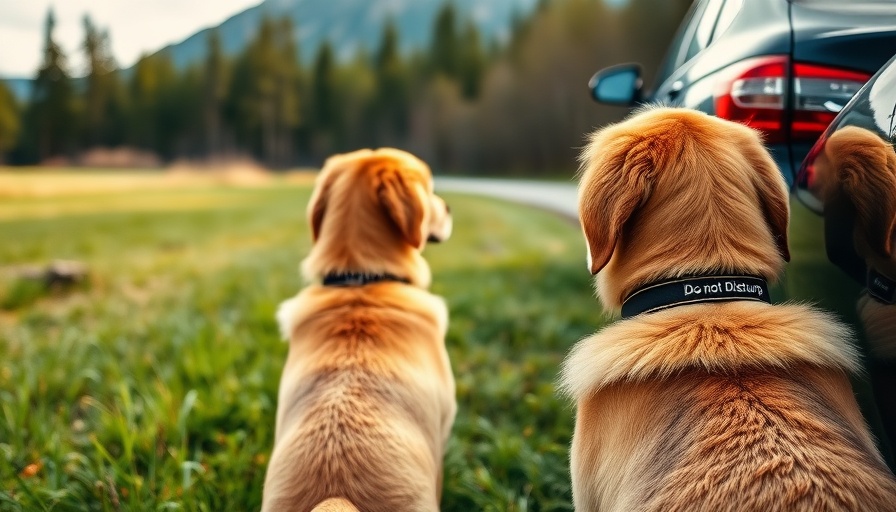
The Dog Seat Saga: A Growing Family on Four Paws
For pet parents like me, sharing space with our furry family members can be a delightful yet challenging experience, especially during road trips. My canine companions, Lava, Hela, and the newest addition, Lajka, have added new layers of complexity to our travels. As dogs tend to have distinct personalities—especially when it comes to car rides—navigating their differing needs can feel like a carefully choreographed dance.
The Importance of Car Safety for Dogs
With multiple large dogs in tow, ensuring their safety and comfort was my top priority. Lava, my barking enthusiast, is a reactive dog, prone to vocalizing when she spots other animals or interesting sights out the window. Conversely, Hela finds her niche in being slightly calmer but still shares her sister's excitement. A crate, while a bit of a shift in our travel arrangements, ultimately promotes a safer environment where they can't see outside distractions that could lead to unwanted behaviors.
Managing Dog Hair: A Constant Battle
Dog hair has become a prominent feature of my vehicle's interior wallpaper, blending with the seats and carpets in a way that screams "dog family." This fact is likely relatable for many pet parents; keeping a car clean while accommodating our furry friends is no small feat. Investing in a good vacuum, lint rollers, and seat covers specifically designed to repel fur can make a world of difference—no dog parent wants unexpected guests to find themselves covered in golden retriever fluff after a quick drive!
Diverse Perspectives on Dog Travel Arrangements
Not every pet owner might agree with my approach of crate training for travel. Some may advocate for allowing dogs more freedom in the vehicle or even using dog seat belts. It’s essential to recognize that each dog has unique needs, and what works for one might not work for another. Veterinary professionals and trainers often emphasize the importance of assessing your pet's behavior to determine the safest and most comfortable arrangement for car travels.
Practical Tips for Pet-Friendly Car Journeys
To help those embarking on similar journeys, I've compiled a set of actionable insights to make traveling with pets less stressful:
- Choose the Right Crate: A crate should be large enough for your dog to stand, turn around, and lie down comfortably. Look for crates that are ventilated and have secure closures to prevent escape.
- Utilize Seat Covers: Invest in high-quality, washable seat covers that protect your car's interior from scratches, hair, and dirt.
- Prepare for Stops: On longer trips, plan for breaks in pet-friendly areas where dogs can stretch their legs and relieve themselves.
- Always Have Water On Hand: Make sure to provide water during pit stops to keep them hydrated.
- Consider Calming Aids: For more anxious dogs, consult your veterinarian about possible calming aids to make travel less stressful.
Understanding the Emotional Dynamics of Pet Parenting
Pet parents must recognize that dogs express feelings, fears, and frustrations. For instance, my observation of Lava's anxiety revealed insights into her potential stressors. As a community of pet owners, we should welcome more conversations on how our pets react to travel, not just from a behavioral perspective but also focusing on their emotional welfare. By sharing these experiences, we can build a supportive environment that addresses issues collectively.
Conclusion: Embracing Our Furry Companions’ Needs with Love
In the end, maneuvering through the trials and tribulations of having a multi-canine household while traveling goes beyond mere logistics. It's a dance of compromise, patience, and immense love. As we continue navigating this journey with Lava, Hela, and Lajka, let’s remember that the joy they bring is well worth the effort and adjustments required.
For veterinarians and trainers, gathering insights from the experiences of pet parents can yield valuable recommendations for future clients. Learning together as a community not only enhances our understanding of pet needs but also helps deliver better care and companionship.
 Add Row
Add Row  Add
Add 




 Add Row
Add Row  Add
Add 


Write A Comment